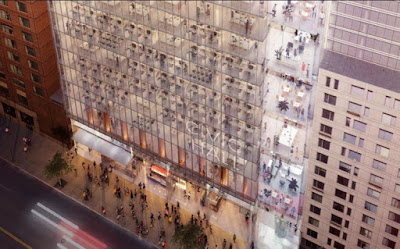Text and photos by Clare Gemima
Group Show, 323 Canal St.
Canal Street for a new-ish comer is so hustle and bustle that it is often easy to miss the hidden gems amongst the light stores, plastic museums and fake Louis Vuitton’s lining the sidewalk.
LatchKey Gallery offers a refreshing respite to this, an incredibly large and open space with a dedicated ethos toward advocating overlooked artists. In this week’s Gallery Watch, I am excited to provide insight into this nomadic contemporary art space that is challenging the status-quo on several different levels.
The powerhouses behind LatchKey Gallery are Natalie Kates and Amanda Uribe. I was lucky enough to meet Natalie at Silo6776 in New Hope at Scooter LaForge’s exhibition Beef Jerky late last year. I could tell Natalie was an enthusiastic and passionate art lover, but it wasn’t until I had come to learn about her Artist Residency Program that she spearheaded with her husband Fabrizio Ferri that I really got the gist of her dedication to emerging artists.
Scooter kindly passed on a Zoom invite to Natalie in conversation with Dana Robinson, (a previous artist in residence), which is how I came to learn of LatchKey’s current exhibition Last Supper.
The show, curated by Tamecca Seril showcases the works of 12 Black female artists, referencing the significant event of the show’s title where Jesus and his apostles gather and consecrate around a banquet feast.
The classic, white-washed representation is (and forever will be) a staple in art history, but that doesn’t mean it can’t be challenged. Last Supper at LatchKey Gallery builds a new table that lifts and honors voices that art history seems to leave out of its canon — those that belong to Black women.
Last Supper celebrates fellowship and organized radical thinking amongst the curated group of artists. The show positions their work within a contemporary context, in turn creating a discourse around what it means to be Black, female and creative while inevitably disrupting the art world’s tiresome and often gross institutionalized normality.
Last Supper showcases the works of Shervone Neckles, Ify Chiejina, Turiya Magadlela, LaToya Hobbs, Kimberly Becoat, Nkechi Ebubedike, Josie Love Roebuck, Jennifer Mack Watkins, Dana Robinson, Dominique Duroseau, Ariel Danielle and Ashante Kindle.
The pieces by Shervone Neckles are photographic and hanging from the ceiling, offering something I have never seen before in a gallery space. History, time and torture are suspended in her golden-framed objects and these works were definitely what excited me the most.
Other works that stood out for me: Jennifer Mack-Watkins’ majestic and sweet prints, Turiya Magadlela’s stunning sewn fabric work at the entrance of the space and Dana Robinson’s charming dappled painted transfers on panel.
As I was watching videos, admiring large-scale paintings and pestering the extremely hospitable and lovely Amanda, I noticed a large back-space to the gallery. Unbeknown to me, this was the studio hosting Kates-Ferri Project artist residency.
The divide from gallery to artist studio space was raw and generous for the average gallery-goer. Once stepping inside the residency quarters, I was enthralled by another young maker’s world. February’s artist in residence was the beautifully spoken and gifted Eric Manuel Santoscoy-Mckillip, who has filled the space with painted sculptures, freshly designed rugs and a working studio that I was delighted to receive an invitation to tour.
Born in El Paso, Texas, Eric plays with ideas of overlapping and blurring — subjects that seek to reflect the in-between space of the U.S. and Mexico border. His work is rich in color, crazy with texture and so bold and confident to the point of intimidating.
At first glance, it looked as though the work was made with 100 percent pure pigment, but thanks to the nature of the studio space, I learned he was using flashe. The artist has built a lexicon around their work that is felt, heard and seen. Eric pays homage to a complex history and identity in the way he uses, as an example, stucco as both a protectant layer and texture creator.
He has an invested interest in design, derivative colorways and has an explorative and deeply personal practice that pays respect to its roots. He moves between painting and sculpture and has been producing experimental work during his time in the residency. To see more of his work, you can visit his website here.
Last Supper will be showing at LatchKey’s Canal Street and Industry City locations until March 20. To book an appointment, please visit their website. A special thanks to Eric and Amanda for having me.
~~ ~~ ~~ ~~ ~~ ~~ ~~
Clare Gemima is a visual artist from New Zealand. New-ish to the East Village, she spends her time as an artist assistant and gallery go-er, hungry to explore what's happening in her local art world. You can find her work here: claregemima.com







































